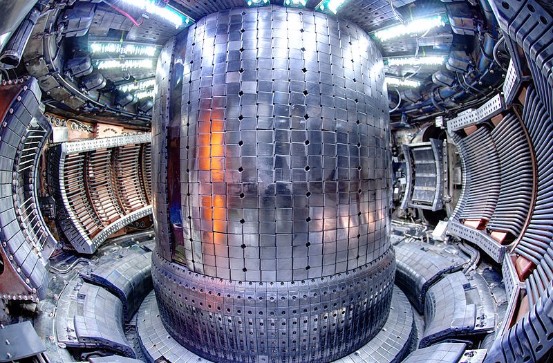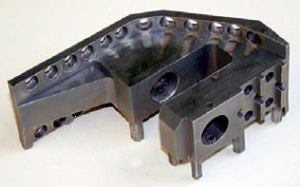
New York Energy Week: Fusion Energy Sooner and Cheaper?
What would it mean to have an essentially limitless amount of energy? If we can harness fusion power, we can have energy that is clean, safe, sustainable, and secure. It will be the power of a sun on earth. The dream of fusion energy has been a scientific goal for decades, but it has remained elusive.
Scientists have struggled to master how to control fusion so that it can be a sustainable source of power: they know how to produce fusion in plasmas of more than 100 million degrees, and they know how to contain the plasma, but they cannot yet produce more energy than it takes to confine the plasma. The scientists are confident that they will be able to produce such an outcome, but they need a machine powerful enough to do so.
On Tuesday, June 16, 2015, Dr. Dennis Whyte, the Director of the MIT Plasma Science and Fusion Center showed that a series of scientific and engineering breakthroughs could enable fusion to become a feasible a power source faster and cheaper than anyone had thought possible. These technological breakthroughs were not originally developed for fusion, but they could revolutionize the development of fusion energy.
As a part of New York Energy Week, Whyte presented to a group of professionals from energy, finance, and media at FTI Strategic Communications’ Wall Street office for a lunch discussion the new developments in fusion energy research. This event was sponsored by the American Security Project as part of their program on Next Generation Energy. Whyte explained that there are a series of recent and ongoing technological breakthroughs that will allow fusion to be developed.
First, Whyte described how High Temperature Superconducting magnets will make building a fusion reactor easier and cheaper. As currently built, a fusion reactor must be surrounded by huge copper wires capable of creating the powerful magnetic field necessary to contain the 100 million degree plasma. New flexible superconducting wire (developed for use in MRI imaging) can make magnetic coils four times as powerful while being lighter and easier to use. This makes it possible to build a fusion reactor at just one‐tenth the volume of one made with conventional superconductors. It may also allow plug‐in “demountable” coils, making construction and maintenance cheaper and quicker.
Second, Whyte explained how new 3D printing techniques are being applied to metal. He showed how 3D printer using new high-temperature steel alloys can build metal in complex shapes that cannot be machined. This will allow components of a reactor to be built quicker and cheaper than ever thought possible. It will also allow production of components once impossible to fabricate. For instance, cooling channels formed inside solid metal parts will allow exposure to hot fusion plasmas at many thousands of degrees.
Third, Whyte cited a new liquid salt material that can surround the plasma in a fusion power plant must be surrounded by a medium to capture heat energy and produce fuel. He discussed how FLiBe, a molten salt made from a mixture of lithium fluoride (LiF) and beryllium fluoride (BeF2), could act as a liquid blanket would immerse the fusion core in a cooling bath. It will reduce construction costs, simplify heat transfer, and allow for the breeding of new fuel.
Finally, Whyte discussed how all of these breakthroughs come together to allow for a modular design that will speed up the design-build process for a new fusion reactor. This will allow scientists and engineers to accelerate the maintenance and upgrade cycles.
Put together, these breakthroughs could mean that demonstration-level amounts of fusion power could be put on the grid far sooner than many had thought. It won’t be easy, and there is still a great deal of scientific and engineering work left, but Whyte’s presentation shows a promising route to developing fusion as a power source. The presentation is below:








Dear Sirs,
my opinion : The magnetic tank can create the necessary plasma but for continuos energy production is probably not possible.
Regards V.V. Innovator